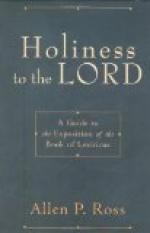In concluding, I wish to say that nothing in the preceding speculations can possibly encourage spiritism or other pseudo-science. On the contrary, from the preceding it is obvious that the alleged manifestations of spiritism must be fake or self-deception, since they are manifestations of energy. Entity “X,” if it exists, certainly is not energy, and therefore could not manifest itself as such.
FOOTNOTES:
[Footnote 8: From Harpers Magazine for February, 1922.]
[Footnote 9: It is interesting to note that the relativity theory leads to the conception of a symmetrical four-dimensional world space (Minkowski), in which in general each of the four dimensions comprises space and time conceptions, and the segregation into three dimensions of space and one dimension of time occurs only under special conditions of observation. (AUTHOR.)]
BIOGRAPHICAL AND CRITICAL NOTES
SIR ARTHUR KEITH, M.D., LL.D., F.R.S., born in Aberdeen, 1866, was educated at the University of Aberdeen; at University College, London; and at the University of Leipzig. From 1899 to 1902, he was Secretary of the Anatomical Society of Great Britain, and was President of the Royal Anthropological Institute from 1912 to 1914. At present he is Hunterian Professor and Conservator of Museum, Royal College of Surgeons, London, and also holds the Fullerian Professorship of Physiology, Royal Institution of Great Britain and Ireland. Beginning with his Introduction to the Study of Anthropoid Apes in 1896, he has produced some ten volumes. Among them are Human Embryology and Morphology (1901); Ancient Types of Man (1911); The Human Body (1912); Menders of the Maimed (1919); and Nationality and Race (1920). He was knighted in 1921.
“The Levers of the Human Body” is helpful in illustrating the value of diagrams and of analogy in the exposition of a mechanism. It may be used also for teaching the student to adapt his work to the audience, for, although prepared at first for an immature audience, its material has since been so adapted that in addition to the general reader it is of particular interest to the physician and to the engineer.
The series of volumes in which Modern Methods of Book Composition appears, is but one of the distinguished services in improving the practice of typography rendered by THEODORE LOW DE VINNE (1828-1914). At his invitation, the chapter, “Mechanical Composition,” was contributed by PHILIP T. DODGE, President of the Mergenthaler Linotype Company.
“The Mergenthaler Linotype,” which is taken from Mr. Dodge’s chapter, is well adapted for teaching the correlation of diagrams and text in the exposition of mechanisms and machines.




